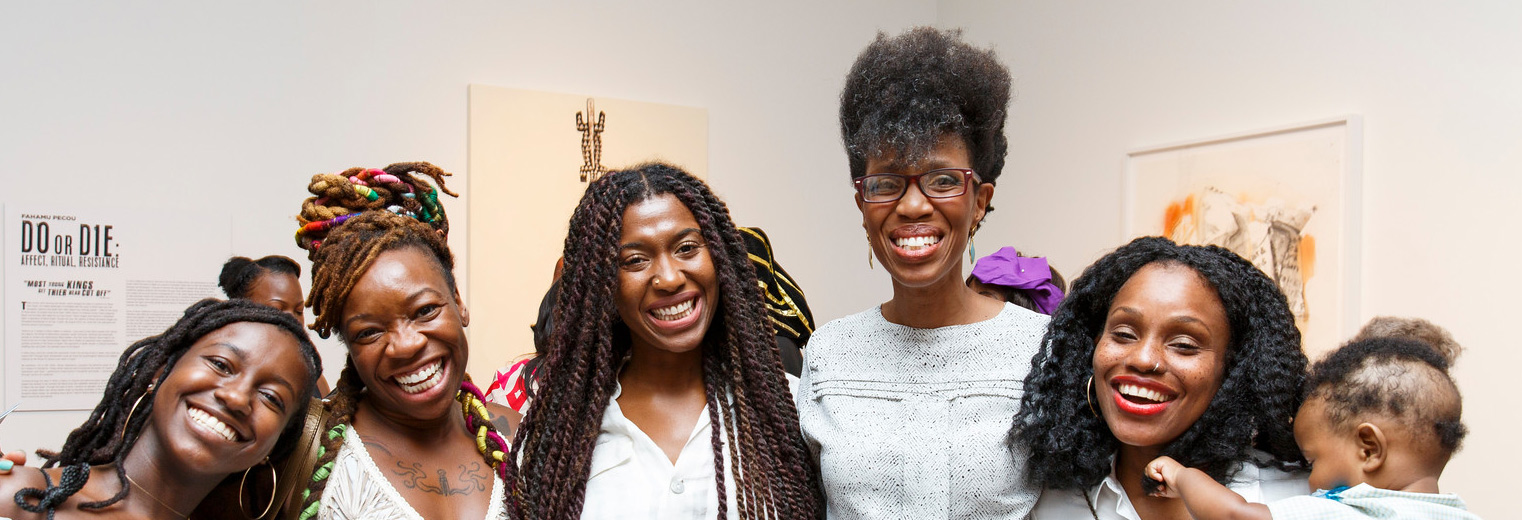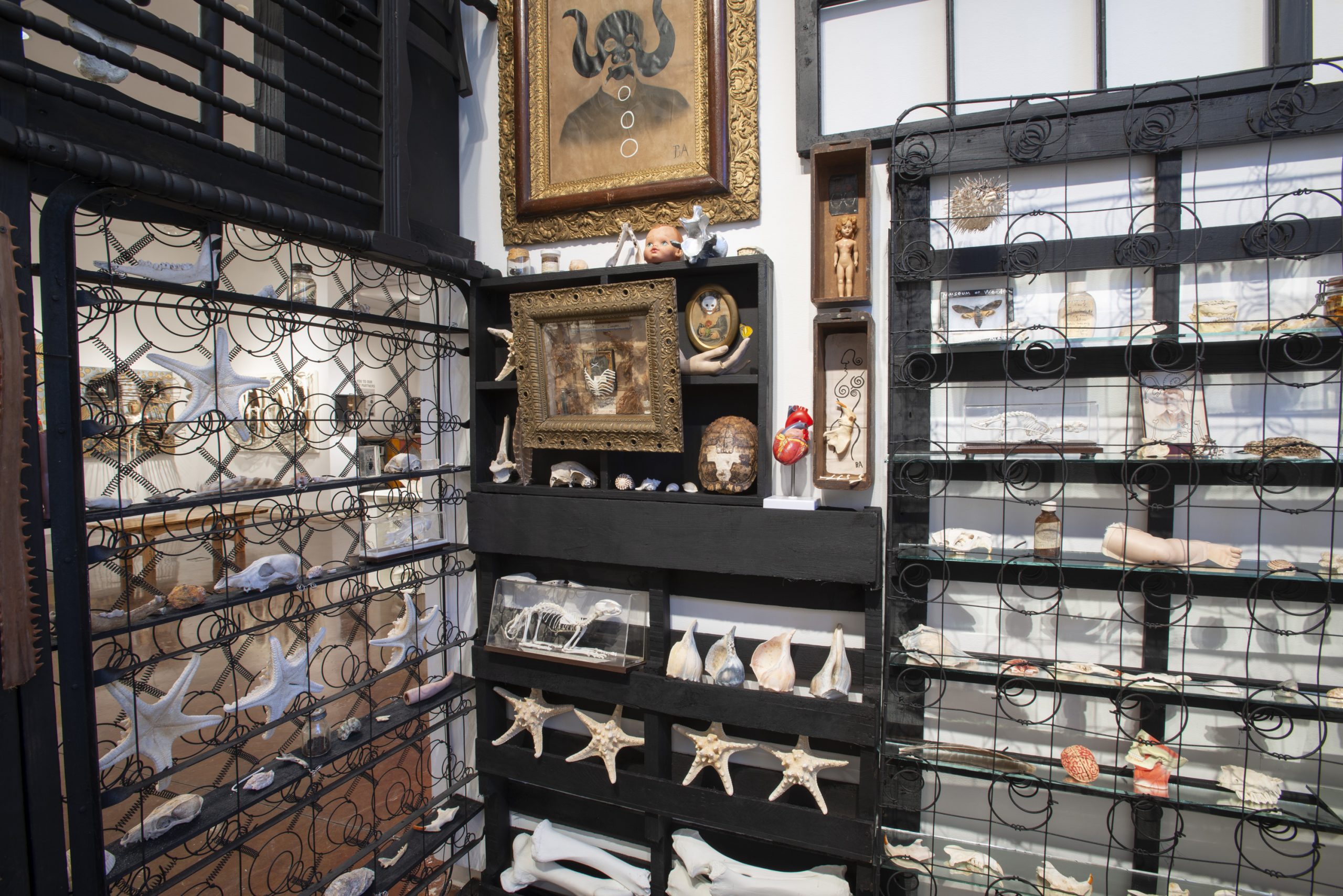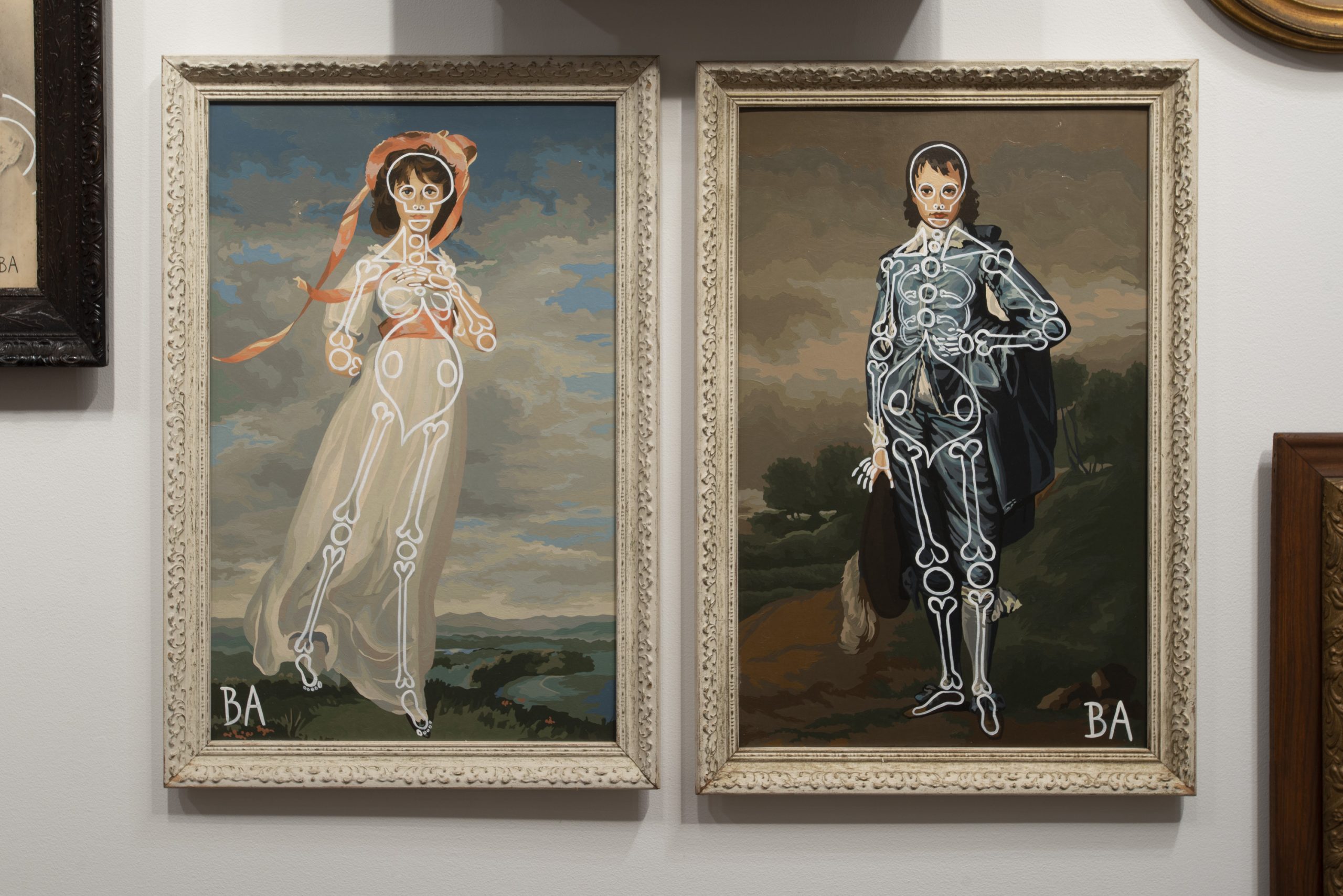


Questioning entrenched assumptions about what art should be and how it is made is a practice long held by many artists and spectators. Marcel Duchamp revolutionized the idea of art in the beginning of the 20th century with readymade items presented as works of art. Readymades are ordinary manufactured objects that the artist selected and modified, and by simply choosing objects and repositioning it, the found object became art. The core method behind Duchamp’s work is to serve the mind, not please the eye. One of the Halsey Institute’s current exhibitions features work from artist Butch Anthony. His exhibition explores the idea of readymades in an abstract way. Still using everyday materials and displaying them as art, the two artists go a step further and combine these materials to make even more substantial, more complex pieces.

Butch Anthony. Portrait of Johnny Parker, 2019. Installation view, Halsey Institute of Contemporary Art, photo: Rick Rhodes
The taxidermy pieces, shadow boxes, bones, shells, and other unconventional materials push the boundaries of what is considered artistic material. With each installation and piece of art, Anthony intertwines the idea of readymades with the American vernacular using bones, taxidermy, paintings, and many other sourced oddities.

Butch Anthony. Pinkie and The Blue Boy, both 2019. Installation view, Halsey Institute of Contemporary, photo: Rick Rhodes.
One of the Halsey Institute’s walls is home to several works from Anthony’s Intertwangles series. Anthony uses acrylic on sourced paintings set in gilded frames and wooden frames throughout the series of works. A specific example being Pinkie and The Blue Boy, the artist overlays his acrylic bone-work over two examples of iconic eighteenth-century English portraiture. A further look into Intertwangles allows the viewer to realize the other portraits are not easily identifiable, yet the pieces have similar bone work. As viewers study face after face, bone after bone, the connection to life and existence pushes further. Every painting begins to look similar, not quite readymade, but similar, and as onlookers stand in front of the Intertwangles, they must decide who will be remembered whether it is our familial or famous portraiture on the gallery wall.
-by TJ Kelly, Halsey Institute intern